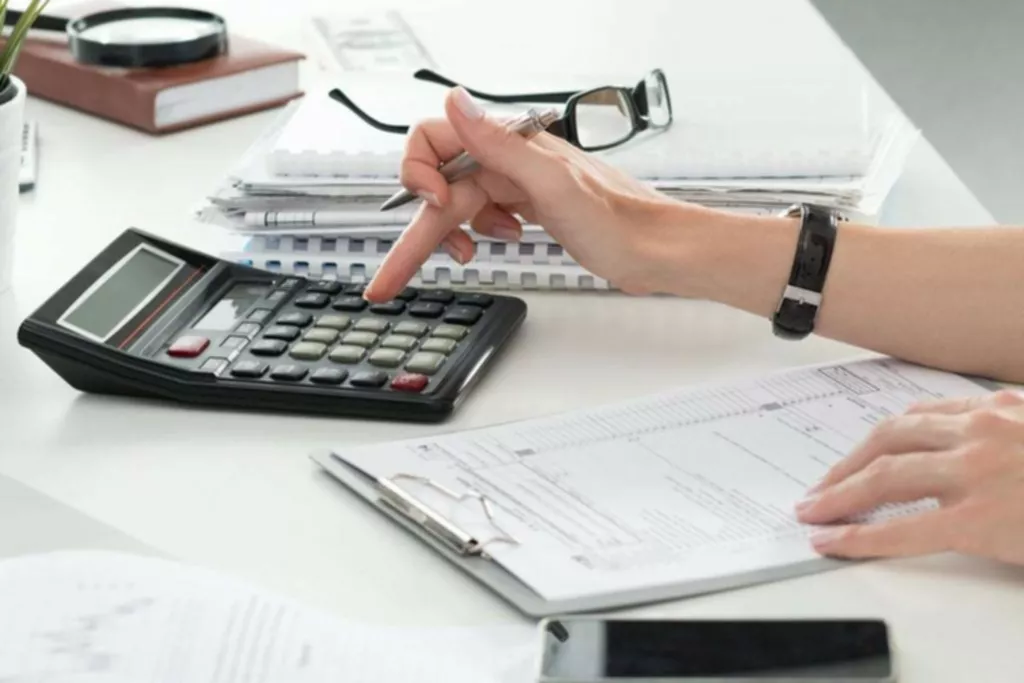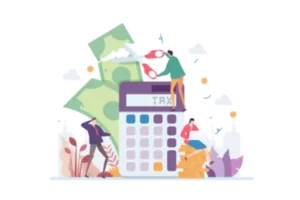Content

We’re qualified to handle the most complicated aspects on behalf of our clients, ensuring you walk away satisfied. Buying or selling a business is a complex process – and you shouldn’t go through it alone. You need an experienced business broker to guide you through the process.
How to calculate valuation?
The formula for valuation using the market capitalization method is as below: Valuation = Share Price * Total Number of Shares. Typically, the market price of listed security factors the financial health, future earnings potential, and external factors' effect on the share price.
A discounted cash flows bar graph compares your future earnings and excess compensation against today’s discounted value (shown in different colors), projected out through the next 10 years. Under the sales-based market approach, compare a company’s revenue to the sale prices of other, similar companies that have sold recently. For example, a competitor has sales of $3,000,000 and is acquired for $1,500,000. So, if the owner’s company has sales of $2,000,000, then the 0.5x multiple can be used to derive a market-based valuation of $1,000,000. Consequently, only use this valuation formula if the comparison company is quite similar to the owner’s company.
Enterprise Value
This is when a company has proven its concept and begins scaling because it has a sustainable business model. A startup without a financial track record is valued at an amount that can be negotiated. Most startups I’ve reviewed created by a first-time entrepreneur how to calculate a business valuation start with a valuation between $1.5 and $6 million. Let’s take a look at the valuations of companies in three stages of entrepreneurial growth. With this method, the way you provide value to customers needs to differentiate you from the competition.
You need to choose the one that is most appropriate for your business. SDE consists of how much money a business can be expected to earn over the course of the year, minus taxes, owner’s draws, and non-essential expenses. Also called an “SDE multiple,” your industry multiplier is a number that you multiply your SDE by to get the fair market value of your business. Each one is different, and shows a different aspect of the company’s financial health. Costs of sales is the total of all costs used to create a product or service, which has been sold. As with the SDE valuation, we then multiply the valuation by some conditional factors.
Asset Turnover Ratio: Definition and Formula
It’s easier to estimate the value of a business that’s been around for 30 years than it is to value a startup. A newer company is dealing with startup costs and has fewer years of financial statements, and it’s hard to know how large the brand may become. When determining your business’s value – and which factors play into its worth https://www.bookstime.com/ – figure out what a potential buyer or investor wants to know. To find an accurate multiple for your industry, search online and use the advice of a site like Valuation Academy. You can also speak with a qualified business appraiser, which may lead to a more thorough examination of which multiple makes sense for your business.
What is the formula for business valuation UK?
How to value a business UK? To get your company's value in the UK, just multiply your P/E ratio by your post-tax profits for the year. The formula for P/E valuation is valuation = profit x P/E ratio. For established businesses with sizable revenue, this strategy works effectively.
Wherever you are in your business’s lifecycle, you’ll want to know how to value a small business sooner rather than later. Feeling confident in your appraisal will help you accurately determine how to pitch investors and raise funding, or price your business to find the right buyer. We’ll take a look at both basic business valuation and advanced business valuation methods. The basic approach is good for small businesses and side hustles, or for getting a ballpark figure for your own sake.
How Frequently Does a Business Valuation Need to be Performed?
Through the discounted cash flow method, you can determine the future value of the company based on its current cash flow and related factors. Western & Southern is the marketing name for a group of diversified financial services businesses composed of Western & Southern Financial Group and its seven life insurance subsidiaries. Products and services referenced in this website are provided through multiple companies. Each company has financial responsibility only for its own products and services, and is not responsible for the products and services provided by the other companies.
Large businesses generally use EBITDA calculations to value their businesses, and small businesses typically use SDE, since small-business owners often expense personal benefits. The present value of your business takes into account current and future cash flows to figure out what your business is worth now as well as later on. This determines whether or not your company is a going concern—a business with stable future earnings, that can keep operating indefinitely without being liquidated.
Determining a company’s value is a growing perpetuity to determine whether it will be an excellent long-term investment. The Earnings Before Interest, Taxes, Depreciation and Amortization or “EBITDA” for a company is an excellent metric to analyze its overall financial worthiness, as it calculates its earnings before any deductions are made. Enterprise value is an excellent way to get the raw financial value of an enterprise, but it doesn’t tell you a lot about its inner workings, such as how much money it spends to make a profit. Appraisers should consider using enterprise value in tandem with other valuation calculators. The number you have remaining tells you the value of the tangible assets owned by the company.
- Private companies are less “liquid” than publicly traded companies, and transactions in private companies take longer and are more uncertain.
- The basic approach is good for small businesses and side hustles, or for getting a ballpark figure for your own sake.
- The Earnings Before Interest, Taxes, Depreciation and Amortization or “EBITDA” for a company is an excellent metric to analyze its overall financial worthiness, as it calculates its earnings before any deductions are made.
- Startups in the ideation stage are companies with an idea, a business plan, or a concept of how to gain customers, but they’re in the early stages of implementing a process.
- As the name suggests, a business valuation determines the value of a business or company.
- The most common place to find business valuation is the finance industry, though.
But with the right information and expert assistance, you can get it right. At this point, the company has several years of actual financial results, one or more products shipping, statistics on how well the products are selling, and product retention numbers. The third stage of startup valuation is the proof of the business model.
How the subject company compares to the industry will help with the risk assessment and ultimately help determine the discount rate and the selection of market multiples. A company’s market capitalization is found by multiplying the total number of shares by the current share price. This can only be done for publicly traded companies, but it essentially determines how much the company is worth based on shareholder equity. This restriction from active trading, which amounts to a lack of marketability, is the only distinction between the restricted stock and its freely traded counterpart. Restricted stock can be traded in private transactions and usually do so at a discount. The restricted stock studies attempt to verify the difference in price at which the restricted shares trade versus the price at which the same unrestricted securities trade in the open market as of the same date.

Successful applicants earn the right to use the ABV designation with their names, which can improve job opportunities, professional reputation and pay. In Canada, Chartered Business Valuator (CBV) is a professional designation for business valuation specialists. It is offered by the Canadian Institute of Chartered Business Valuators (CICBV). That doesn’t mean you need to hire an expert every time, but it is helpful to know your business’s value at any given time. You can see why getting a proper valuation of your business (or a business you are buying or merging with) is essential. Without it, you might undervalue or overvalue a business and that can cause problems down the line.
Your SDE represents the true, monetary value of your business, but your SDE multiple values your business according to industry standards. You’ll calculate your business’s value with a specified formula, taking into account your assets, earnings, industry, and any debt or losses. Entrepreneurs looking to buy an existing business should also be familiar with valuations, and feel comfortable estimating value independently of the business owner or broker’s asking price.
- At this stage, the rate of sustainable growth becomes the most crucial factor in valuation.
- Other discretionary, non-operating expenses are added back in for the calculation.
- In any of those cases, buyers will be interested in the individual value of your investments or equipment.
- However, an asset’s stated value on a financial statement may be different from how much it’s worth in cash.
- In the U.S., Accredited in Business Valuation (ABV) is a professional designation awarded to accountants such as CPAs who specialize in calculating the value of businesses.
- You divide terminal cash flow by the expected capital the company will own several years into the future.
Under the times revenue business valuation method, a stream of revenues generated over a certain period of time is applied to a multiplier which depends on the industry and economic environment. For example, a tech company may be valued at 3x revenue, while a service firm may be valued at 0.5x revenue. Publicly traded stocks have grown more liquid in the past decade due to rapid electronic trading, reduced commissions, and governmental deregulation. These developments have not improved the liquidity of interests in private companies, however.

